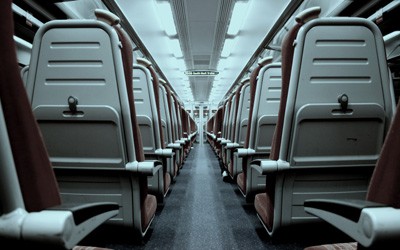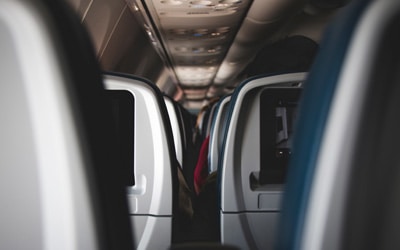
Aircraft seating may look simple, but actually there’s a lot of science goes into its creation. Here is a quick explanation of just some of it.

In the context of aircraft seating, comfort essentially means designing seats which can accommodate people of very different sizes and proportions, distributing their weight effectively and providing each passenger with the right balance of cushioning and support.
Comfort depends on ergonomics which is basically the science of designing products (in this case, seats) so that they facilitate the activities for which they are required.
The challenge of designing aircraft seats is that they need to be able to facilitate a wide range of different activities, such as eating and drinking, reading, watching in-flight entertainment, working and, in some cases sleeping.
Added to all of this, the aircraft seating should be of minimal weight and minimal dimensions.
The former is to improve fuel efficiency and the latter is both to be able to accommodate more passengers and to create more space to facilitate movement between seats, not just for the crew or for the convenience of passengers, but to exit in case of emergency.
When designing your airlines seats, you should consult with your plastic aerospace component manufacturer so you can go through your requirements and the manufacturer can they understand this to create a solution that will please the company, and their travelling passengers.
Some airlines, especially budget ones, will make compromises on their seating in order to increase the efficiency of their operations.
Sometimes, these compromises may be barely noticed. For example, on short-haul flights, airlines may dispense with reclining seats on the logic that passengers are highly unlikely to want to sleep during them. Sometimes, however, they can be very visible indeed.
For example, certain aircraft seating has been designed to have a very upright position, which reduces legroom and hence increases the number of seats (and therefore passengers) who can fit onto a flight.
This may sound good in theory, but it’s hard to see how these seats could be used safely by the very old or young, pregnant women and/or people with certain disabilities. They would therefore, presumably, have to be used in combination with regular aircraft seating.
Sometimes, ergonomics and economics can be combined, such as in the innovation of “staggered seating”.
In this seating model, the middle seat (in a row of three) is set very slightly back from the window and aisle seats, thus creating a bit more room for the occupant without inconveniencing either the other passengers or the crew.

In an aircraft environment, nothing is random not even the colours and fabrics used on the seats. Most aircraft seats are blue because blue is associated with calm.
They are likely to be a darker blue in economy than in the premium classes as the seats in economy get more use and lighter colours show stains more easily.
Similarly, the fabrics used in economy are likely to prioritise durability whereas those used in the premium classes may be chosen for their elegance.
As cabin interior manufacturers, we understand the importance of detail. We can create a product to your airlines exact requirements to ensure your passengers will be safe and comfortable throughout their flight.
While much of the science of aircraft seating revolves around trying to balance comfort and economy, safety is always the prime consideration.
As aircraft seat manufacturers, we understand that aircraft seats must make it possible both for crew members to reach any passenger who needs assistance and for everyone to exit the plane quickly and safely if there is an emergency.
If you’ve enjoyed this article and want to find out more about our plastic aerospace components, please contact our friendly team today who will be happy to help with any queries you may have regarding the materials, design and installation.
If you have a question for us, or would like to discuss a specific project, please do get in touch.